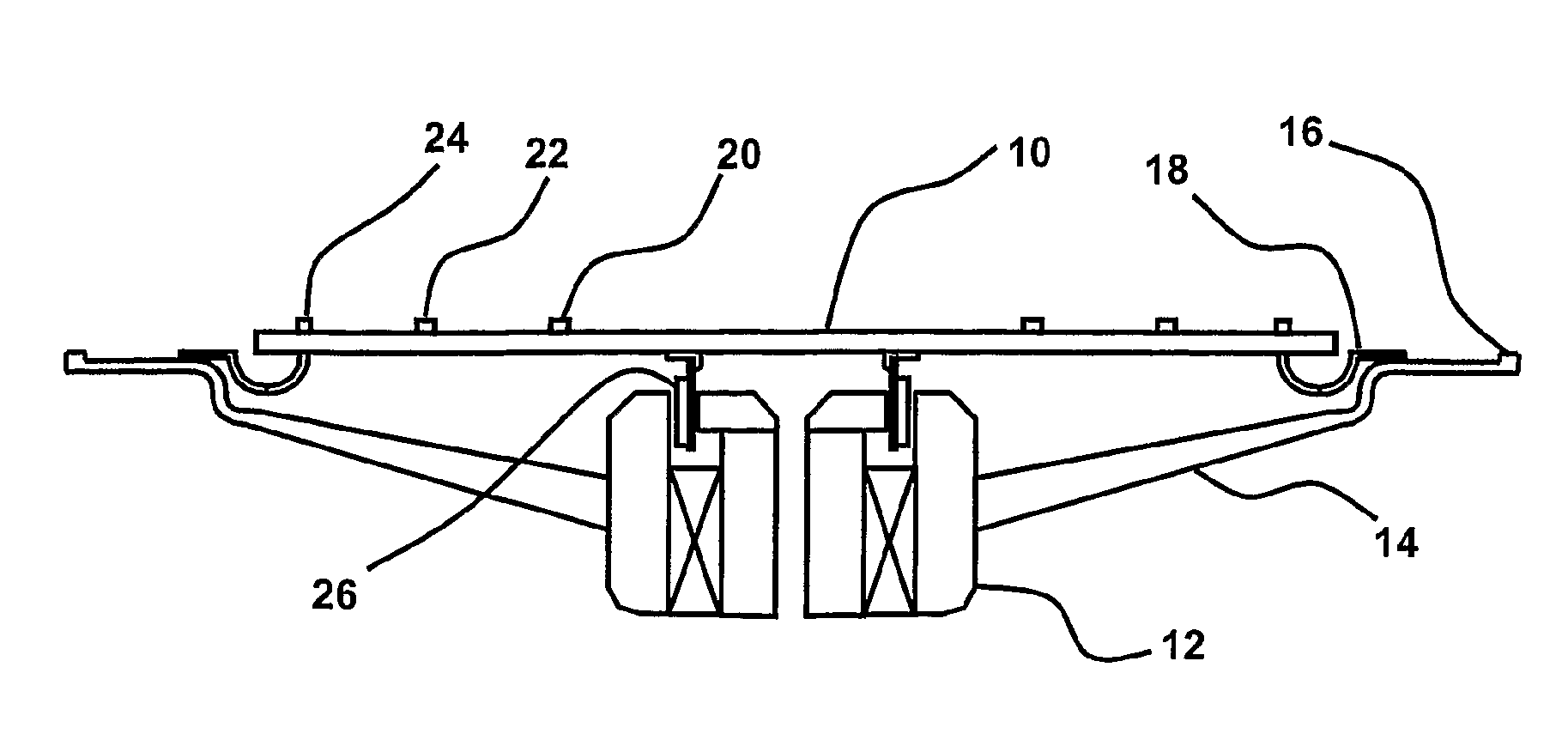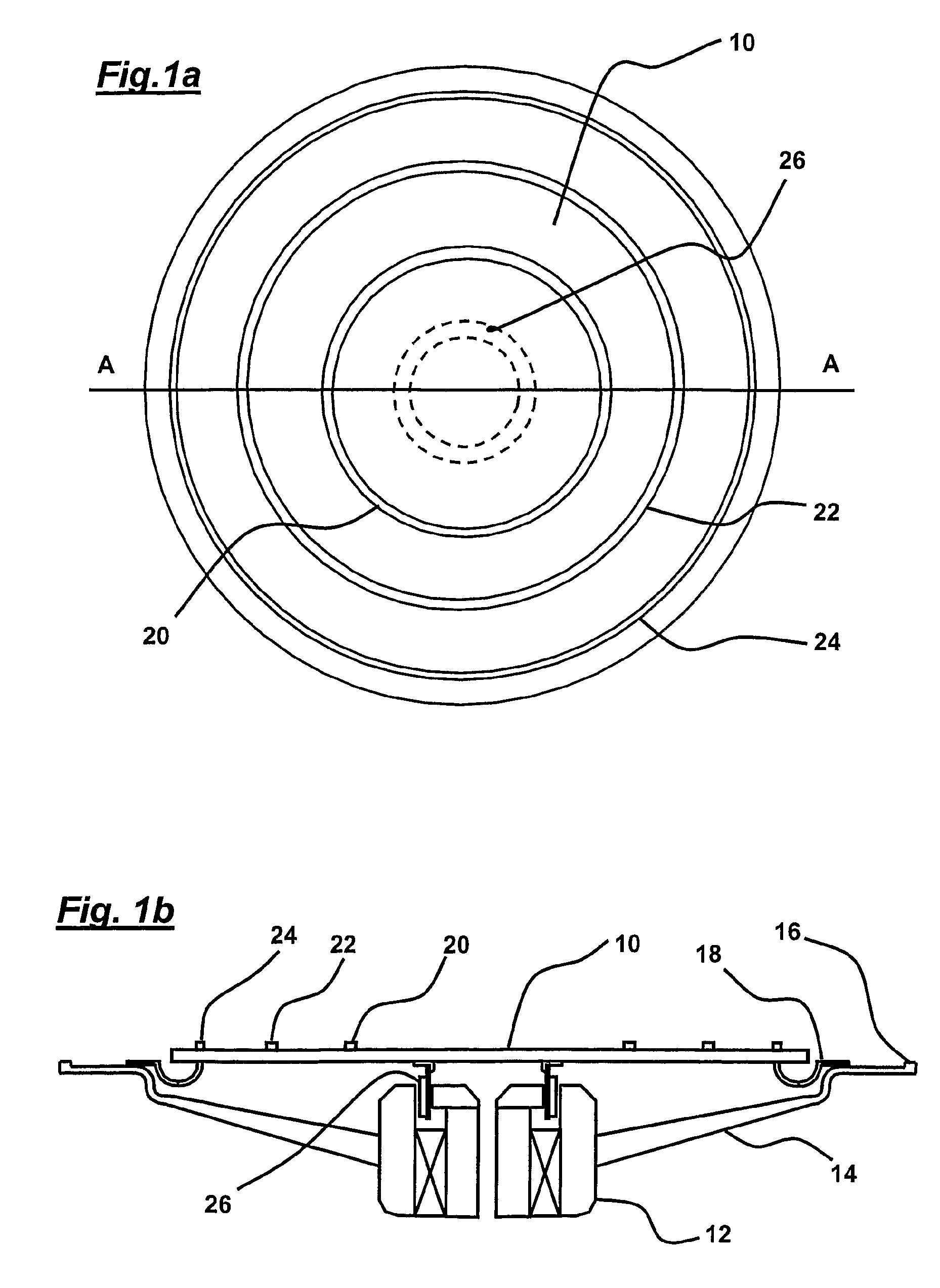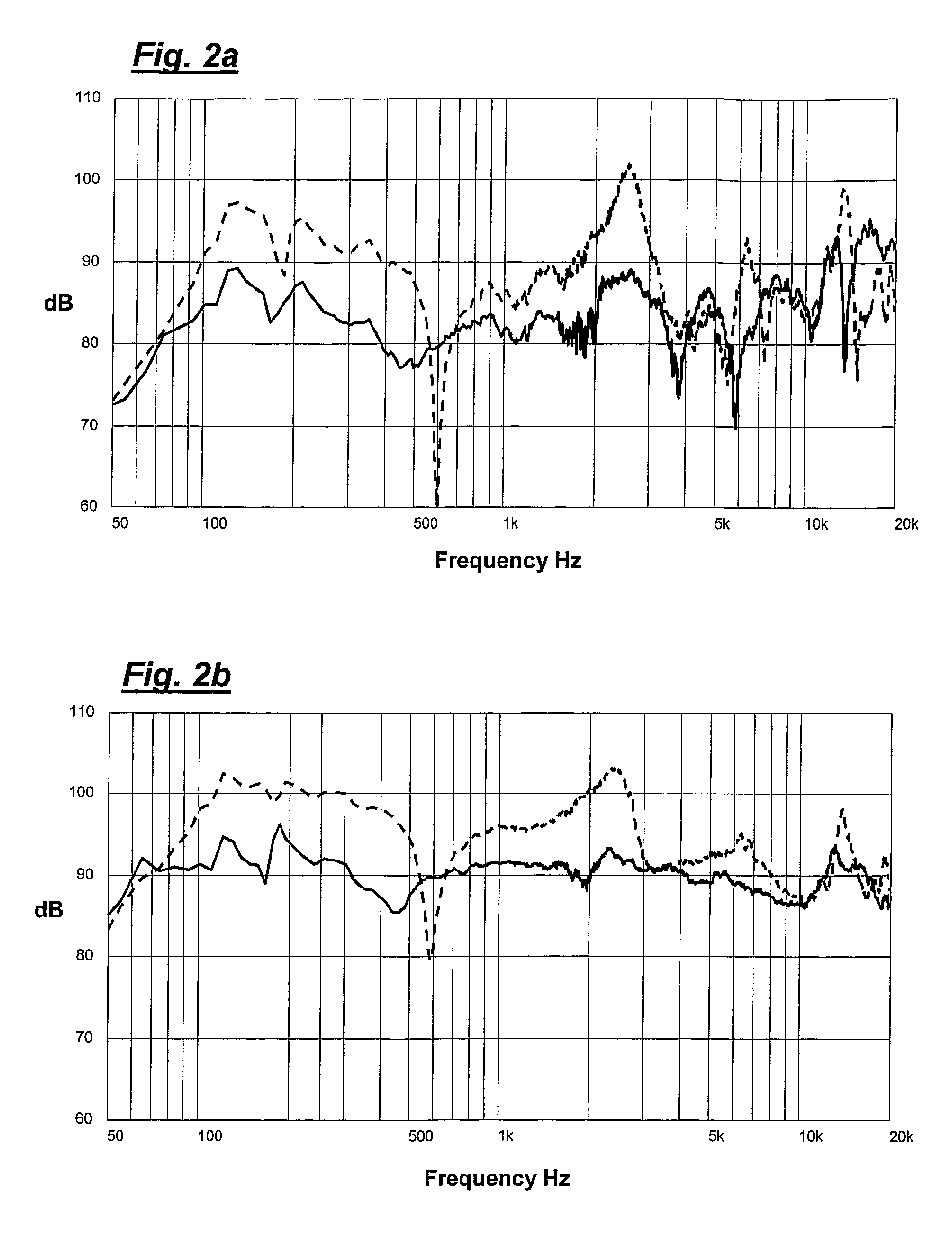Acoustic device and method of making acoustic device
a technology of acoustic devices and acoustic output, which is applied in the direction of transducer diaphragms, electromechanical transducers, instruments, etc., can solve the problems of unbalanced panel modal behaviour and ineffective distribution mode methods, so as to prevent leakage of acoustic output and improve the performance of acoustic devices
- Summary
- Abstract
- Description
- Claims
- Application Information
AI Technical Summary
Benefits of technology
Problems solved by technology
Method used
Image
Examples
Embodiment Construction
[0178]FIGS. 1a and 1b show a loudspeaker comprising a diaphragm in the form of a circular panel 10 and a transducer 12 having a voice coil 26 concentrically mounted to the panel 10. Three ring-shaped (or annular) masses 20,22,24 are concentrically mounted to the panel 10 using adhesive tape. The voice coil and masses are each located at annular positions which may be termed positions 1 to 4 with position 1 being the innermost location and position 4 the outermost.
[0179]The panel and transducer are supported in a circular chassis 14 which comprises a flange 16 to which the panel 10 is attached by a circular suspension 18. The flange 16 is spaced from and surrounds the periphery of panel 10 and the suspension 18 is attached at an annulus spaced from the periphery of the panel 10. In this way, the panel edge is free to move which is important since there is an anti-node at this location. Similarly, there are no masses located at the centre of the panel since there is also an anti-node ...
PUM
 Login to View More
Login to View More Abstract
Description
Claims
Application Information
 Login to View More
Login to View More - R&D
- Intellectual Property
- Life Sciences
- Materials
- Tech Scout
- Unparalleled Data Quality
- Higher Quality Content
- 60% Fewer Hallucinations
Browse by: Latest US Patents, China's latest patents, Technical Efficacy Thesaurus, Application Domain, Technology Topic, Popular Technical Reports.
© 2025 PatSnap. All rights reserved.Legal|Privacy policy|Modern Slavery Act Transparency Statement|Sitemap|About US| Contact US: help@patsnap.com



